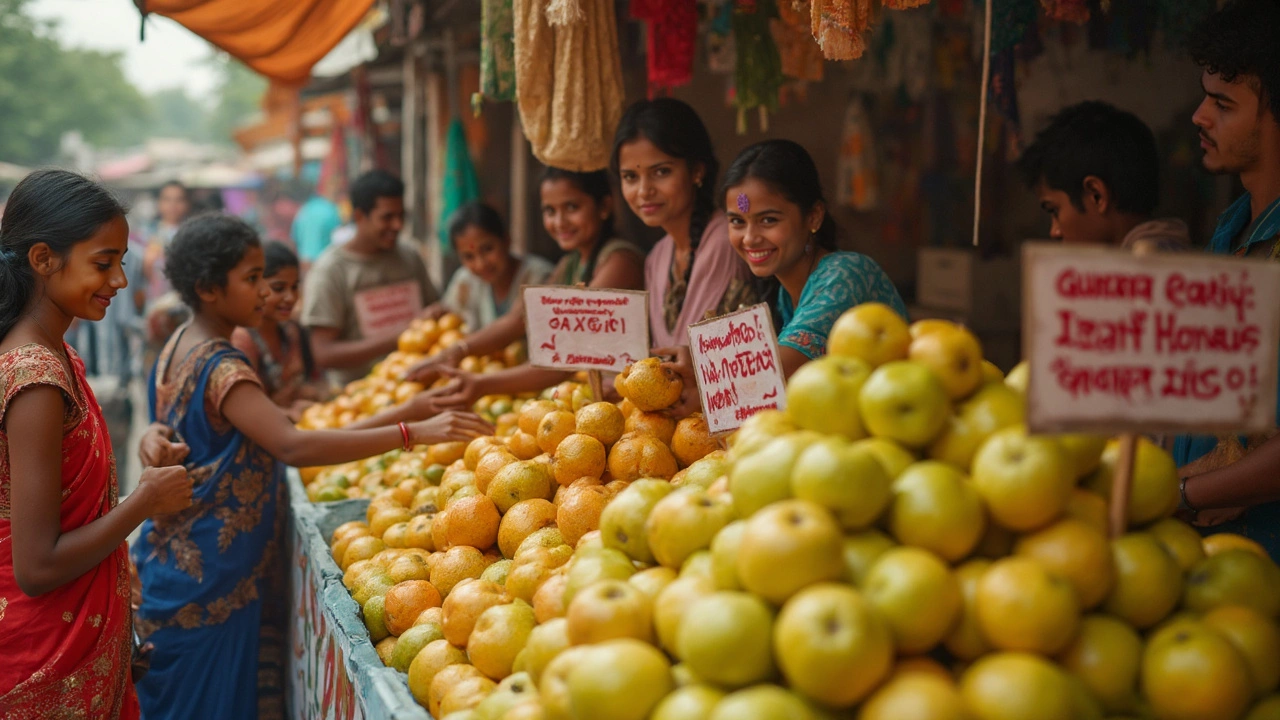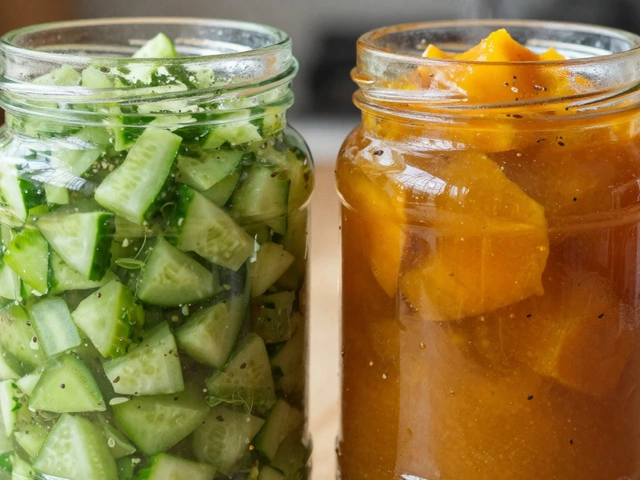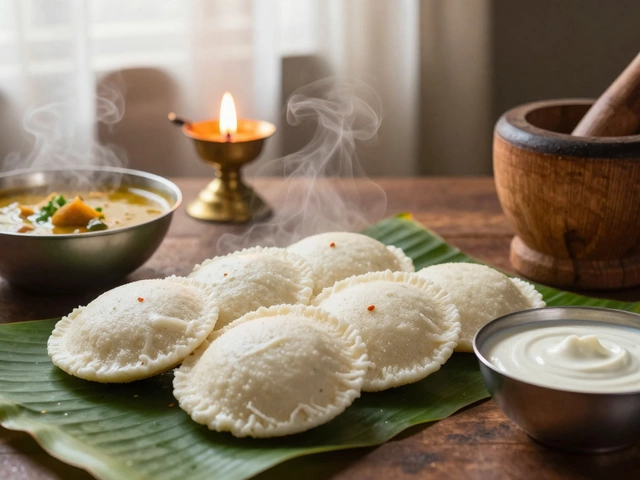Think fruits, and most people picture something sweet, juicy, and probably good for vitamins, not protein. But what if you’re craving a snack that’s not just tasty but helps you stay full longer? Protein isn’t just for gym-goers or people munching on boiled eggs. It’s key for everyone who wants to avoid that afternoon slump and feel satisfied between meals.
Here’s the catch—most popular fruits barely offer any protein at all. Bananas, apples, and mangoes do almost nothing on that front. If you’re looking for a truly high-protein fruit in India, your options are slim but not zero. Let’s scratch beneath the skin of the Indian fruit basket and see which one stands out for serious plant-based protein.
- Why Protein Matters in Snacks
- Indian Fruits and Their Protein Content
- Jackfruit: The Surprising Winner
- How to Add High-Protein Fruit to Your Snacks
Why Protein Matters in Snacks
Most people think of snacks as quick bites to kill a craving, but they often leave you hungry in an hour. That’s where protein steps up. The right amount of protein in snacks helps you feel full longer, so you’re not reaching for cookies before dinner. There’s actual science behind this—protein curbs your hunger hormones better than carbs or fats.
Getting enough protein is key, especially when your main meals aren’t always packed with it. In one study, people who added a small high-protein snack in the afternoon ate 100-200 fewer calories at dinner, without feeling deprived. If you’re struggling with energy dips or just can’t seem to stay away from late-night munchies, upping your snack’s protein is a game changer.
Let’s get specific. Here’s what protein actually does for your snacks:
- Reduces sudden hunger, which helps stop mindless eating
- Keeps your metabolism steady, so you don’t crash after sugary snacks
- Helps maintain muscle, even if you’re not working out much
- Feeds your brain, helping you stay sharp during study or work
Now, how much protein is enough in a snack? For most adults, a decent snack should have around 5-10 grams of protein. That’s not easy to hit if you’re only eating fruit, so choosing the indian fruit with the highest protein per serving really matters here.
| Snack Type | Average Protein (g) |
|---|---|
| Standard apple (medium) | 0.5 |
| Banana (medium) | 1.3 |
| Boiled egg | 6.3 |
| Paneer cubes (50g) | 4 |
| Jackfruit (1 cup, raw) | ~2.4 |
The usual fruits score low, so it pays to know which Indian fruit gives you that bonus protein. Let’s see which one pulls ahead for a satisfying, smart snack.
Indian Fruits and Their Protein Content
Most fruits are great for a quick energy boost, but when you check their protein numbers, it’s a bit disappointing. If you compare fruits to something like dal or paneer, the protein story is pretty underwhelming. Still, there are a few Indian fruits that stand out—even if only a little bit—when it comes to protein.
Here's a look at the protein content in some popular Indian fruits (all values per 100 grams):
| Fruit | Protein (g per 100g) |
|---|---|
| Guava | 2.6 |
| Jackfruit | 1.7 |
| Mango | 0.8 |
| Papaya | 0.5 |
| Banana | 1.1 |
| Pomegranate | 0.95 |
| Chikoo (Sapota) | 0.4 |
If you look at the numbers, guava leads with about 2.6 grams of protein per 100 grams. Jackfruit isn’t far behind, and bananas aren’t as low as some might guess. Most other fruits just don’t come close.
Guava is worth a second look. It's actually one of the high protein indian fruits that sneaks onto a lot of fitness diets in India, right alongside more traditional sources of protein.
But remember, even at the top, we're still talking about a couple of grams—so eating only fruit won’t cover your daily protein needs. Still, if you like to snack on fruit anyway, it's smart to pick the ones with the most protein per bite.

Jackfruit: The Surprising Winner
Jackfruit isn’t just another tropical fruit crowding Indian markets—it’s actually a real game-changer if you need more protein in your diet. Out of all the usual suspects, jackfruit stands out as the high protein Indian fruit you want to add to your snacks. It’s especially common in South India, known as "kathal" in Hindi and "chakka" in Malayalam.
Let’s get specific. For every 100 grams of raw jackfruit, you get about 1.7 grams of protein. Compare that to something like mango, which only gives you about 0.8 grams, and the difference is clear. No, it won’t beat lentils or paneer anytime soon, but for fruit, this is about as good as it gets in India.
| Fruit | Protein (per 100g) |
|---|---|
| Jackfruit (raw) | 1.7 g |
| Mango | 0.8 g |
| Banana | 1.1 g |
| Papaya | 0.5 g |
But here’s what makes jackfruit even more interesting: it’s not just about protein. It’s super filling because it also packs a good dose of fiber. That means you’ll stay full and satisfied for longer, especially if you’re eating to manage weight or avoid endless snacking. You get a bunch of vitamins too—vitamin C, some B vitamins, and minerals.
Don’t know what to do with jackfruit? That’s the fun part. In its raw form, it soaks up spices and flavors, making it perfect for things like grilled jackfruit tikka, stuffed parathas, or even tossed into salads. Ripe jackfruit is sweeter and can be added to smoothie bowls or just eaten straight up.
- Use raw jackfruit as a meat substitute in curries or wraps.
- Chop ripe jackfruit into small cubes for quick fruit chaat.
- Add it to homemade granola bars for more protein than you’d expect from a regular fruit bar.
Jackfruit is easy to find in bigger Indian cities and village markets, especially during summer and monsoon. If cutting it feels messy, look for frozen or canned jackfruit—just rinse it well if it's packed in brine or syrup.
How to Add High-Protein Fruit to Your Snacks
So, we’ve settled that jackfruit beats most Indian fruits when it comes to protein. But how do you actually use it in everyday snacks—without spending hours in the kitchen? Here’s the thing: jackfruit isn’t just for curries or weird fusion recipes. It works great in both sweet and savory snacks, and you don’t have to be a pro chef to get started.
First, here’s why jackfruit stands out: 100 grams of ripe jackfruit contains about 1.7 grams of protein. Compare that to mango, which has less than 1 gram per 100 grams, and it’s clear why it’s worth a spot in your healthy snack routine. Here’s a quick look at common Indian fruits and their protein content:
| Fruit | Protein (g) per 100g |
|---|---|
| Jackfruit | 1.7 |
| Guava | 2.6 |
| Mango | 0.8 |
| Papaya | 0.5 |
| Banana | 1.1 |
Now for the fun part. How can you sneak jackfruit—and the runner-up, guava—into your snacks for a protein boost? Here are a few quick and simple ideas:
- Jackfruit Paratha: Mash some ripe jackfruit and mix it into your whole wheat paratha dough. It’s sweet, filling, and gives a nice twist to the regular version.
- Guava Chaat: Chop up guava, add some chaat masala, lemon juice, and black salt. This takes five minutes and can be packed for work or study breaks.
- Jackfruit Smoothie: Blend ripe jackfruit with plain yogurt and a handful of nuts for an easy power breakfast. No complicated ingredients required.
- Fruit Salad Upgraded: Add a good dose of jackfruit and guava cubes to your regular fruit salad. Top it with roasted seeds for extra crunch and protein.
Guava actually edges out jackfruit with 2.6 grams of protein per 100 grams, making it the high protein indian fruit to really focus on. And unlike jackfruit, you don’t need to do anything fancy with guava—just slice it or eat as is. If you have access to both, mix them up for a double whammy in your snack bowl.
A quick tip: Jackfruit seeds also have protein—about 3 grams per 28 grams (roughly one ounce). Boil or roast them like peanuts for a surprisingly tasty and filling nibble. Just don’t eat them raw: that’s not safe for digestion.
Bottom line—adding these fruits to your snacks isn’t hard, and it gives you a fun change from the usual options. You get a bit more protein without having to rely only on the classic nuts or dairy. Plus, if you’ve got kids who turn up their noses at dal, sneaking some jackfruit or guava into their snacks is a sneaky mom win.


